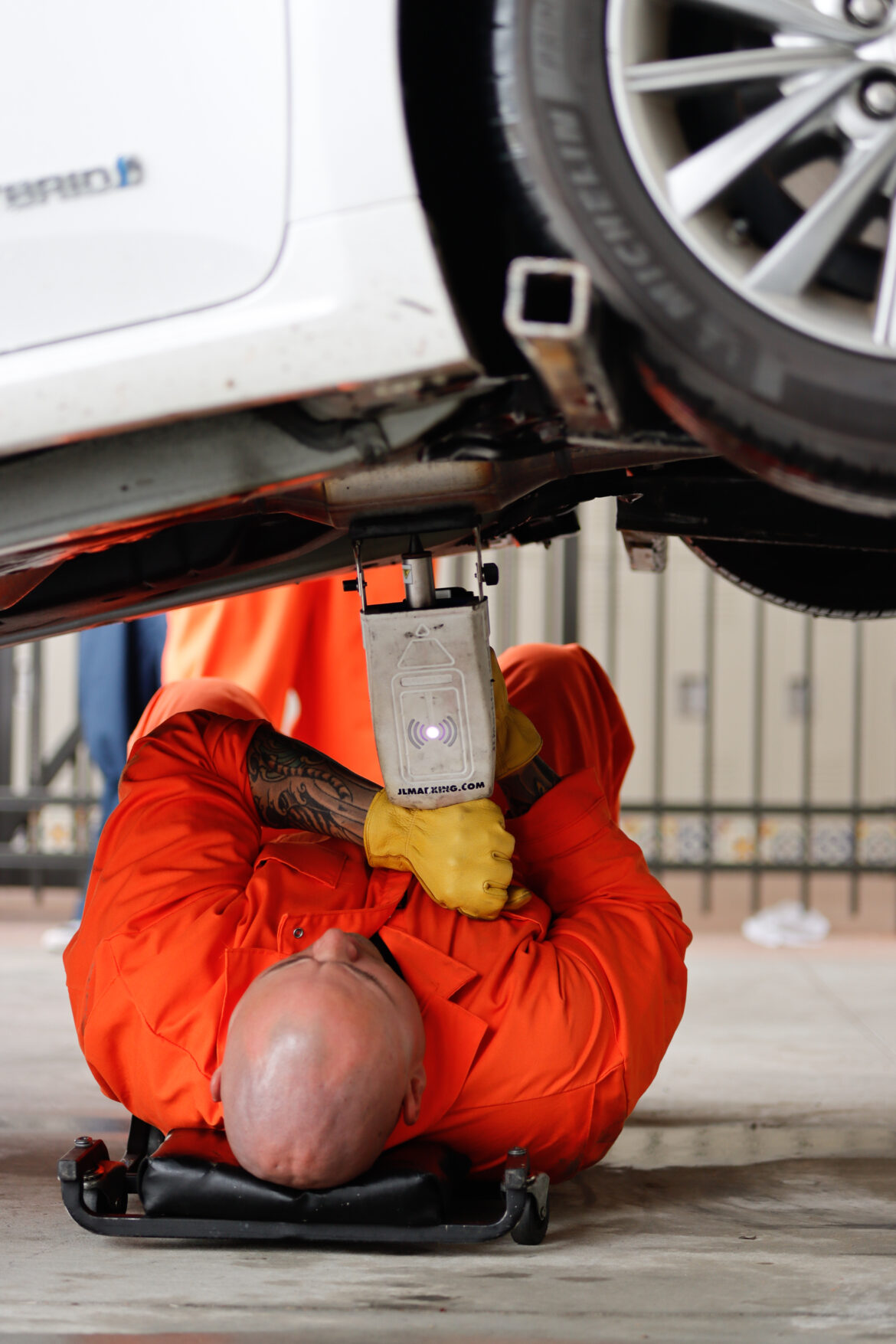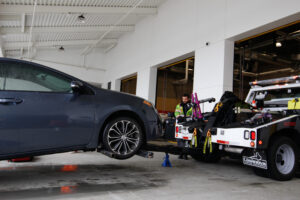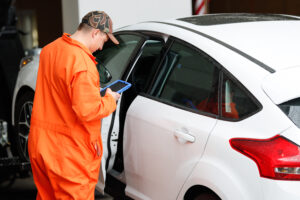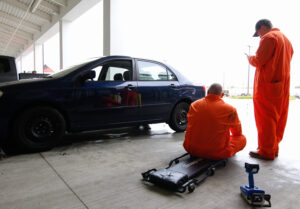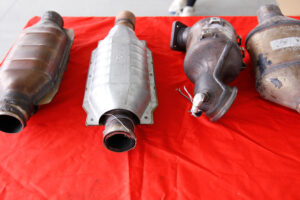One worker drove the car into one of two bays. Another scanned the VIN and the vehicle was lifted up by a tow truck driver. A fourth worker slid under the car and etched the VIN onto the catalytic converter. The etching was done, the car was brought down, and it was driven back to its owner—all within a couple minutes.
Two hundred cars were registered for the March 2 free Catalytic Converter Etching Event by LAPD Topanga Division. Detective Cesar Flores, the detective supervisor in charge of the auto table at the Topanga division, said this was their third event at Pierce.
“We have worked together in the past along the same lines to etch catalytic converters,” said Alex Villalta, a professor and department chair for industrial technology at Pierce who was on-hand to ensure things were going well with the facility. “And this is obviously due to the increase of catalytic converter theft that’s been happening not just in the San Fernando Valley, but pretty much all in LA County.”
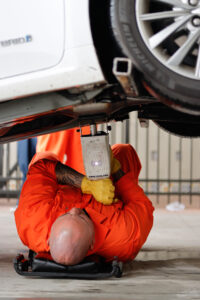
Last year, the Topanga division—encompassing Canoga Park, Winnetka, Woodland Hills and West Hills—had more than 300 catalytic converters reported stolen, according to Flores.
He explained that when a catalytic converter is cut from a car, it makes a terrible sound.
“Basically, the purpose of the catalytic converter—there’s an O2 sensor hooked up, an oxygen sensor, hooked up to it. So it helps run the emissions of the vehicle,” Flores said. “Will your car run and work? Yes, but it’s not good for the car. Eventually the car would stop working properly.”
Some catalytic converters are more valuable than others, and some vehicles have more than one. One stolen catalytic converter can go for a couple hundred dollars, said Flores.
“Unfortunately, it costs the victim four times that amount, if not more, to get it replaced,” Flores said. “Because even though the bad guy gets a couple hundred dollars for the catalytic converter piece, to replace one could be in the thousands of dollars.”
Three years ago, Detective Jeff Lohmann, of the Sheriff’s Altadena station, started a company—JL Marking—with equipment that quickly scans the VIN on the door jamb, uploads it to the etching machine and engraves the full VIN in about 30 seconds.
Etching catalytic converters doesn’t necessarily prevent theft, but it allows law enforcement to identify stolen or recovered components, said Lohmann.
“They give us in law enforcement a good working tool to identify, find the victim and be able to aid in recovery of it, and also the prosecution,” he said. “So that’s the main reason we’re doing this.”
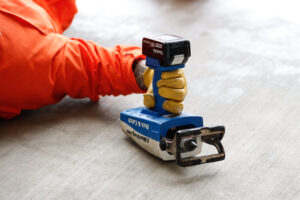
Villalta encouraged Pierce students—some of whom have had different perspectives of and experiences with police officers—to attend the event, and to network with the officers and TRAP (Taskforce for Regional Auto Theft Prevention) team. About 15 to 20 students come by these events throughout the day, he said.
“I think it’s a great opportunity for them to come in, meet the officers,” Villalta said. “And ultimately, you just learn that they are human beings, just like us, and they are just simply doing their job. So I think it’s an opportunity for them to network with the officers, it’s an opportunity for us to showcase our department and let the community and also the officers know about our beautiful new expansion building here in the automotive facility.”
Villalta also had a chance to give a tour of the facility to interested visitors.
“A lot of vehicle owners will come in, and then while their catalytic converter is being etched, they’re standing around and then we talk to them,” Villalta said. “We have some flyers that we give them, so we take the opportunity to give them flyers, not necessarily only about automotive, but all industrial technology and all CTE.”
Araceli Perez-Garcia, who is studying both automotive and criminology, found it interesting to watch and learn how the catalytic converters are etched.
“It’s pretty cool just being able to talk to the police officers, actually see what else they do besides doing this, how they started, so I can get a little information to see where I could start at,” Perez-Garcia said.
Perez-Garcia, whose father is a mechanic and helped spark an interest to study in the automotive field, found it important to attend the event.
“I kept on going strong and I loved it,” Perez-Garcia said. “I’m a student worker here at Pierce as well, at the auto shop, so I’m learning more of a lot of things that I didn’t know, and helping other students and advocating for the department and just the school, which is amazing. So I love it so far. Thanks to Alex I’m able to have a lot of opportunities like this—coming here to this event is opening doors for me.”

